#DX-sized image sensors
Explore tagged Tumblr posts
Text
capture and output task 1
1) What type of sensor does your camera have?
I have a Canon 750D and it has a 24.0MP APS-C (22.3 x 14.9 mm) sized CMOS sensor, sensor resolution is 6026 x 4017,

2) is it a full-frame or cropped?
The Canon 750D is a cropped sensor, crop factor is 1.61.

3) Find out as much as information as you can about your DSLR camera:
Effective megapixels is 24.20, total megapixels is 24.70, maximum image resolution is 6000 x 4000, has multi, centre weighted, spot, and partial metering, screen resolution is 1,040,000 dots, exposure compensation is ±5 EV (in 1/3 EV, 1/2 EV steps).
4) Based on your research on sensors, what do you notice?
That they're all quite similar, showing peaks in performance in different places with versus each other.
Nikon Z50 incorporates an APS-C sensor vs the (then) flagship for the Canon DX series cameras with a 20.9-megapixel sensor and a 10 fps burst mode. Nikon offers solid image quality whilst Canon offers colour quality.
Sony has some of the best mirrorless cameras out there. The A99 II has a 42.4-megapixel sensor, 12 fps shooting, and a strong autofocus system.
Also, BSI sensors produce better results at the higher ISO sensitivities.
2 notes
·
View notes
Text
Capture & Output :
It is important for a photographer to understand some of the ways in which photographic images maybe captured and their impact on image quality. It is equally beneficial to have an appreciation and recognition of a range of image printing presentation methods and their impact on the ‘look’ of the final images.
All of which will aid and inform professional practice and decision making.
Your current Camera vs your dream Professional camera?
Nikon D5
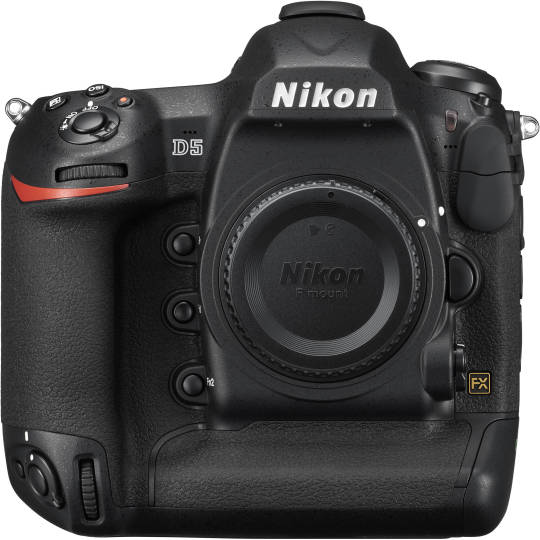
Dimensions 6.3 x 6.2 x 3.6 inches
Weight 3.1 lb
Type D-SLR
Megapixels 20.8 MP
Sensor Size Full-Frame (35.9 x 23.9mm)
Maximum ISO 3280000
LCD size 3.2 inches
LCD dots 2,359,000
Viewfinder Type Optical
Video Resolution 720p, 1080p, 4K
All new Nikon-designed 20.8MP full-frame image sensor.
Expeed 5 processor.
All new 153-point phase detection autofocus system with 99 cross-sensors.
Automated autofocus fine tune.
Native ISO range now stretches from 100-102,400.
12fps continuous shooting with full autofocus and autoexposure.
4K video recording.
Offered in dual CF and dual XQD memory card configurations.
Touchscreen functionality during both stills and video shooting.
CIPA rating of 3,780 shots per charge using the same EN-EL18a battery as D4S.
The Nikon D5 is the company's flagship action-oriented DSLR, sporting a 20.8MP full-frame sensor, 153-point autofocus system and a full-size, double-grip chassis that is both tough as nails and exceedingly comfortable to use. Though the core build of this camera remains very similar to the D4S, the sensor and autofocus system are entirely new and as we'd expect - designed with speed and reliability in mind.
Nikon D5100
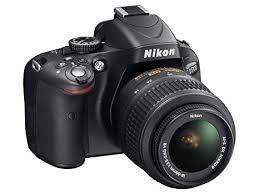
Dimensions 128 x 97 x 79 mm (5.0 x 3.8 x 3.1in)
Weight • No battery: 510g (1.1 lb) • With battery: 560g (1.2 lb.)
Type D-SLR F-
Megapixels 16.2 MP
Sensor sizer • 16.2 million effective pixels • 23.6 x 15.6 mm CMOS (DX format)
Maximum ISO 6400
LCD monitor • 3.0" TFT LCD • 921,000-pixel TFT • Articulated
Viewfinder magnification • 0.78x
Viewfinder Frame coverage • Approx. 95%
Image sizes • 4928 x 3264 (16.2MP) • 3696 x 2448 • 2464 x 1632
Movie mode • 1080p30/25/24 • 720p30/25/24 • 424p30/24
The Nikon D5100 is a 16.2-megapixel DX-format DSLR F-mount camera announced by Nikon on April 5, 2011. It features the same 16.2-megapixel CMOS sensor as the D7000 with 14-bit depth, while delivering Full HD 1080p video mode at 24, 25 or 30fps. The Nikon D5 is an extraordinary camera because of its superior autofocus system that really does automatically identify, locate, lock-on and track autofocus perfectly for fast moving subjects at 12 FPS in the real world. It's the best AF system I've ever used for moving targets by a large margin — and it works in the dark as well as in daylight. You don't need to buy new lenses; I get this performance even with my 17-year-old. The D5 is extraordinary because its Auto W Balance works great in any light, giving great-looking results even under modern mixes of awful artificial fluorescent and energy-saving lighting. Its Auto White Balance the best I've used, along with its little sister the D500. The D5 has by far the best high ISO performance I've ever used. It really does work great at ISO 102,400. Nikon is lying about the Hi+5 (ISO 3,276,800) setting, which gives nothing but useless garbage, but up to ISO 102,400 you can sell the images and no one is going to notice anything lacking. Put these things together and no other camera matches the D5's ability to shoot anything, anywhere, in any light. It's the king of low light, and the king of action. It's sort of like what the US Marine snipers tell their targets: you can run, but you'll just die tired. If you want to shoot it, the D5 will get it, and it will be sharp and colourful as well. Nikon always says that their new cameras are awesome, and it's usually just the same old thing with a new feature or two. With the D5's genuinely new AF system and Auto WB performance, along with ultra-high ISOs and 10-20% higher frame rate than the old D4 and D4s, the D5 really does let us shoot more better, which gives pro shooters significant competitive advantages.
NIKON LENSES:
Nikon AF-P DX NIKKOR 10-20mm f/4.5-5.6G VR Lens

Ultra-wide 10-20mm focal length
Compact design
Superb clarity and contrast
Vibration Reduction
Near-silent autofocus
Nikon AF-S 50mm f/1.8G Lens

Maximum aperture of f/1.8.
SWM for fast, quiet autofocus.
Lightweight and compact body.
Aspherical lens element
Weather-sealed metal lens mount
Nikon AF-S NIKKOR 24-70mm f/2.8E ED VR Lens

Professional standard zoom
Fast f/2.8 aperture
Vibration Reduction
Advanced optical construction
Rugged and reliable
Nikon AF-S NIKKOR 200-500mm f/5.6E ED VR Lens
FX-format super-telephoto
Constant f/5.6 aperture
Vibration Reduction
High-speed AF operation
High optical performance
Nikon AF-S Micro 105mm f2.8G IF-ED VR Lens

For close-up and macro shooting
Vibration Reduction (VR)
Bright f/2.8 maximum aperture
Silent Wave Motor (SWM)
Outstanding close-up performance
2 notes
·
View notes
Text
Seeing the Light . . . Portrait Research and practice. Not complete!

Today kicked off a brand new project brief called ‘Seeing the Light’. This brief is designed around capturing 4 portraits, family, friends or strangers, in natural light. In this brief we can use either or a combination of a diffuser, scrim, flags or reflectors in certain situations according to how intense the natural ambient light is.
What are the Qualities of Light?
Natural light is any light generated by the sun. The light of day can be harsh or diffused, depending on the weather, cloud-cover, heat and cold, direction, or even time of year.
Without the benefit of light, there can be no image. The frame would be void, black and lifeless. So one could say that each image has a symbiotic relationship light. There is a push and pull between the areas of shadow and the lighter areas of an image, irregardless of whether the light falling on our subject is natural or lit with studio lighting.
Characteristics of Light
The Golden Hour
***************************************************************************************
Portrait Lenses
(note: I have not included the 35mm here because headshots taken with the 35mm exhibit distortion. That being said, with distance, the lens can be good, however, it is just not a portrait lens and will never truly be as good as the ones listed below.)
I think that lenses should be chosen by, not only where the image is going to be taken, say, i.e. a very small studio, or on walk-about around Glasgow, but also available light
The three prime portrait lenses that really shine for me are -
50mm - The 50mm prime lense has a wide aperture and is a great standard portrait lens. It has a fantastic shallow depth of field, and though it has less distortion that a 35mm, there is still some barrel distortion with headshots, so I would stick to half-body or full-body captures.
What is barrel distortion? See below.
Barrel distortion is an aberration and “happens because the field of view of the lens is much wider than the size of the image sensor and hence it needs to be “squeezed” to fit”. (Mansurov, 2019)
“Some barrel distortion is present in most wide angle lenses and zoom lenses with relatively short focal lengths.” (Mansurov, 2019)
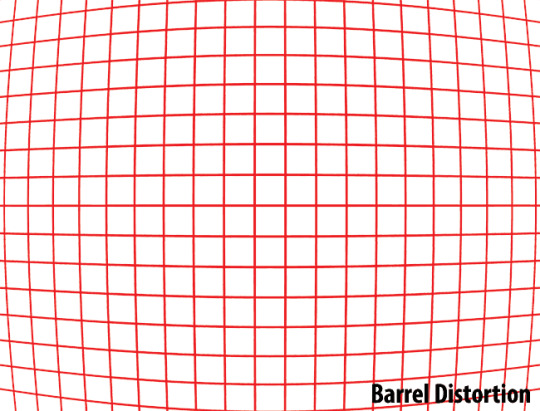
(Mansurov, 2019)
Since we have spoken about barel distortion, we have to include pin cushion distortion. Pin cushion distortion in zoom lenses, in particular, consumer grade or even some pro lenses. More expensive lenses contain compensating elements that reduce pincushion distortion to acceptable levels.

(Mansurov, 2019)
The above are examples of optical distortion.
Below is what happens when you capture up-close images with a wide angle lens. This however, has to do with perspective distortion and not lens distortion. Lenses have no perspective. I will be researching this further in a later blog.
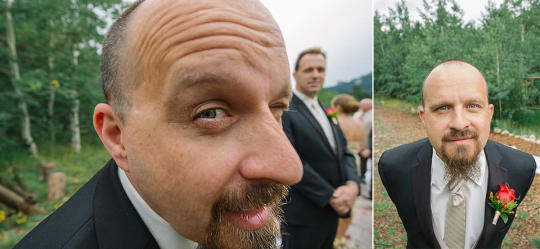
(Mansurov, 2019)
See below - focal length does not impact perspective distortion when you are far enough away from your subject.
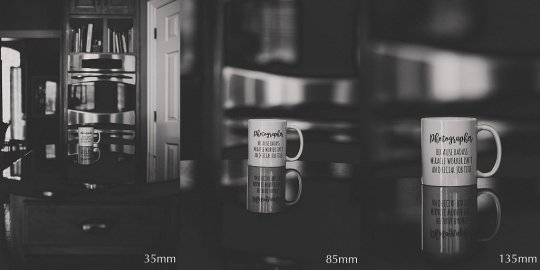
(Lightroom, 2019)
However - perspective distortion is caused by the distance between the lens and the subjects face, NOT focal length.

(Lightroom, 2019)
85mm - Most photographers would agree that the 85mm is the best lens for portrait photography. It has a wide aperture, shallow depth of field and less of the distortion that we get with the 35mm and 50mm lenses, however there is still some barrel distortion. It is still a go-to lens though because close-up to our sitter we capture a flattering perspective of our subject’s face. Also, 85mm at 1.4mm - 1.8mm will make the background melt into a creamy background, even with waist-high shots, and full length shots. At full length there is still a wonderful 3D feel to the shots with a decent amount of background if you so choose.
135mm - The 135mm prime lens has a wide aperture and longer focal length which gives gorgeous bokeh. I have a manual 135mm lense and the bokeh is swirly and beautiful and it produces sharp images, however, it is manual focus, so would be better in the studio imo. I do note however that, the 85mm is a better choice for closeness to the subject you are shooting. A conversation can continue and a rapport can be built to put her or him at ease. (Abbott, 2019)
Nikkor DX 18-105mm lens - This has been my go to lens when I am out shooting street photography or street portraits. It spans the ranges I need for portrait photography. For example, see the 4 images below . . .
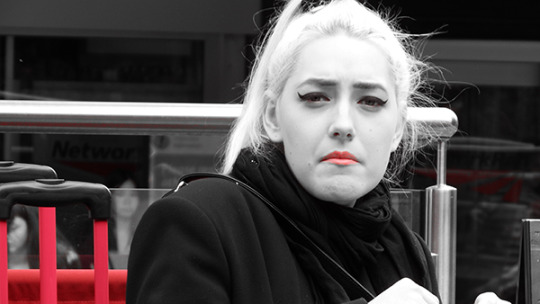
TinaBritton Photography 2014
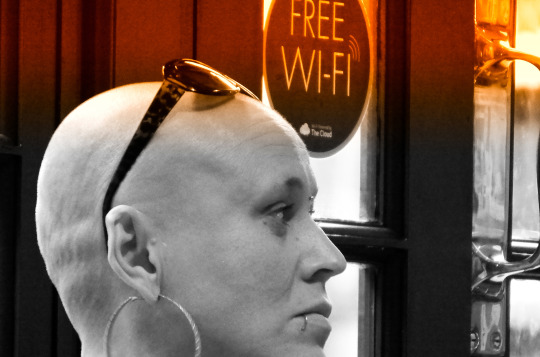
TinaBritton Photography 2014
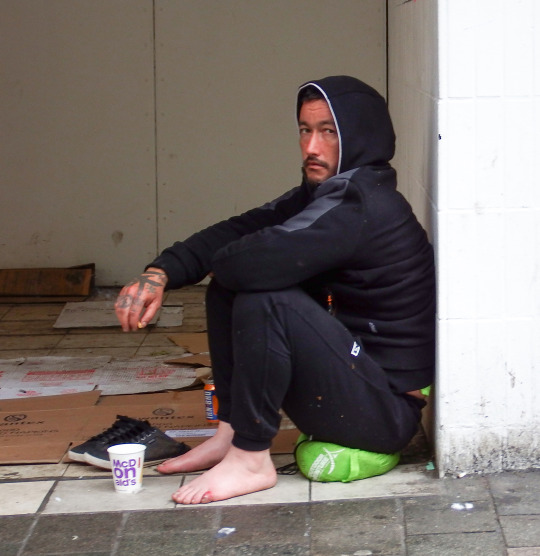
TinaBritton Photography 2017
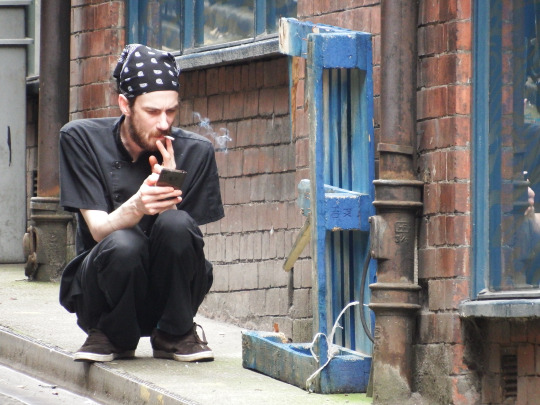
TinaBritton Photography 2017
105mm (full frame sensors) - This is my next prime lens. Yes, the 18-105mm I already own expands to 105mm, however, I want the constant large aperture the Sigma lens offers.
What about zoom lenses?
What if you only have a 70-200mm (as with the 18-105mm above) in your bag and cannot afford prime lenses right now? The 70-200mm can work for you in many portrait situations. Now, I like to be close to my models. It’s more personal and while I am shooting, I can have a conversation with he or she. This puts the model at ease. With this lens we can still shoot in that range, however, that being said, capturing a portrait, though I have to stand further away, at say, 200mm at 2.8mm creates a beautiful background and unique perspective. Watch out for distortion. (Hull and >, 2019)
*****************************************************************************************************
How do we control the light?
What is a Scrim?
Scrims is a woven fabric on a frame that reduces the light by about 1/2 stop. “The Full scrims will dim the light intensity across the entire beam spread, while 1/2 and graduated scrims are used to even out the beam spread when lighting a subject or background from an angle.”
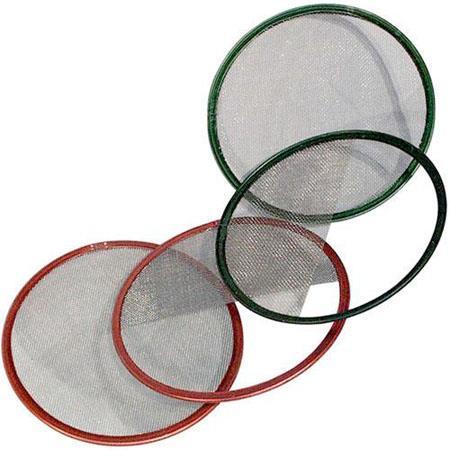
(Anon, 2019)
What is a Flag?
A flag (black refector) is used to block or control (shape) the light in your scene. It can be used to fill in shadow (negative fill) and to increase contrast. It can stop flares from reaching your camera, almost in the same way a lens hood does.
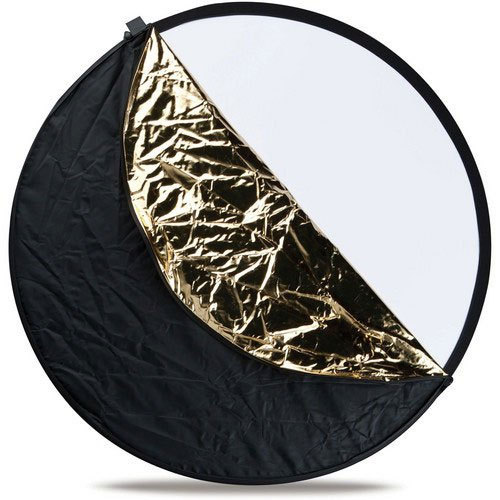
(Digital-photo-secrets.com, 2019)
What is a diffuser?
A diffuser (or silk) goes between your light source and your subject and produces a finer light, like a softbox. It reduces glare and is flattering to your subject.
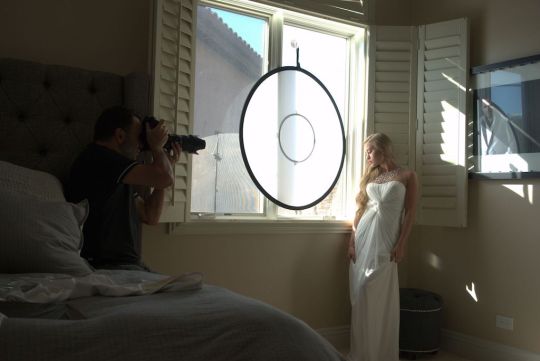
(Ghionis, 2019)
What is a reflector?
A reflector helps light reach your subject and also helps to soften the light meeting your subject. It comes in silver and gold and white. Many come in a kit as the one seen below. Be careful using the silver as it can be harsh if bouncing bright sun. Gold gives your subject a golden hour look, however, in some situations, can give your sitter a strange glow. White gives your subject a soft glow.
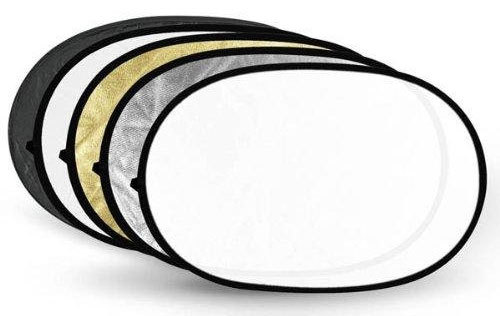
(Digital-photo-secrets.com, 2019)
Choose 5 Photographers -
1. Henri Cartier-Bresson -
Henri Cartier-Bresson was born to a successful textile manufacturer and his mother (1908-2004) in France. The master of capturing a candid moment, Bresson was the father of street photography and photojournalism. It was his belief that photography was about capturing the spontaneous or the ‘decisive moment’.
Throughout his career, Bresson took hundreds of natural light portraits of famous people, many of them well known and important artists of his era.
It was in 1947 that Henri and some of his peers started a cooperative photography agency called Magnum Photos, dedicated to the premise that photography had become an influential communicative tool. Bresson’s responsibility in the agency was to travel to India and China, but he also travelled to countries such as Greece, Moscow, Egypt and America. His most beloved assignment was his trip to Moscow. “He was the first photographer allowed to enter the USSR after the death of Stalin in 1953”. (Huxley-Parlour Gallery, 2019)

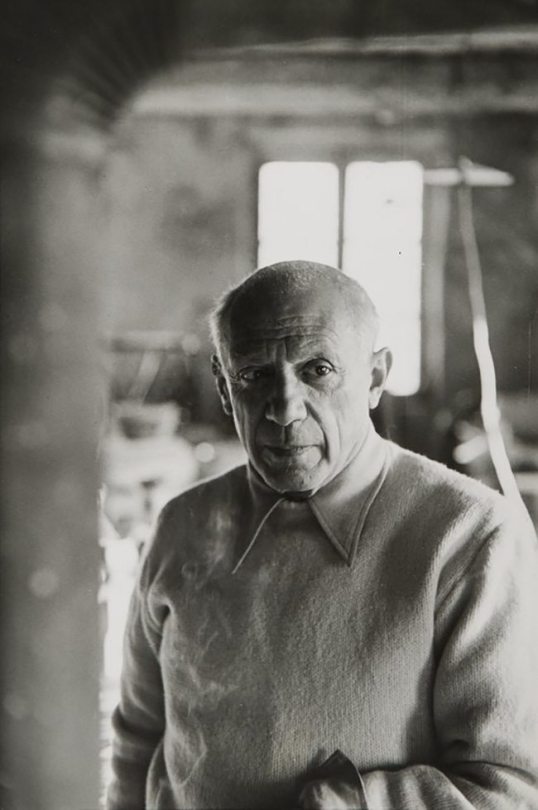
Photograph of Pablo Picasso by Henri Cartier-Bresson. (Ipoxstudios.com, 2019)
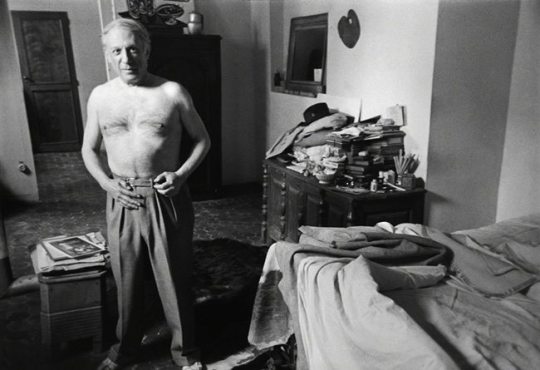
Photograph of Pablo Picasso by Henri Cartier-Bresson (Ipoxstudios.com, 2019)
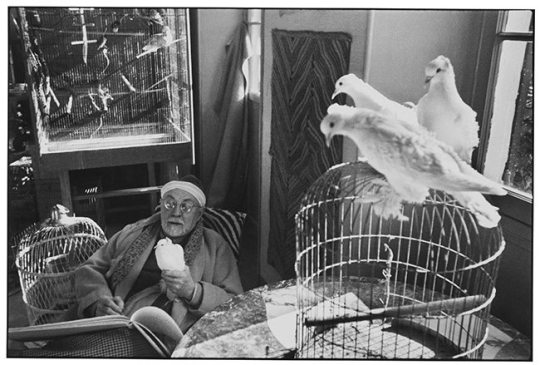
Photograph of Henri Matisse by Henri Cartier-Bresson. (Ipoxstudios.com, 2019)
2. John Loengard -
John Loengard is an American photography born 1934 in New York. Harvard educated, he learned his craft at the International Centre for Photography in New York. His photographic journey began when he was 11 years of age when he began capturing images of his family.
It was in his senior year at Harvard when Loengard was asked by Life magazine to freelance for them by photographing a freighter run aground on Cape Cod in 1956. This began his work with the Magazine.
In 1972 Life magazine suspended its weekly publication and it was then that became the picture editor of Life Special Reports. At the time, he was also the picture editor of People magazine during is formation and for the beginning 3 months of its publication.
Loengard helped in Life magazine’s rebirth and was its picture editor until 1987. While working for Life and other magazines, the photographer authored 10 books and in 2005, He was named “One of the 100 most influential people in Photography” by American Photo. He was inducted into the International Photography Hall of Fame in 2018.
Below is an image of Georgia O'Keeffe sitting on the roof of her home in 1967.
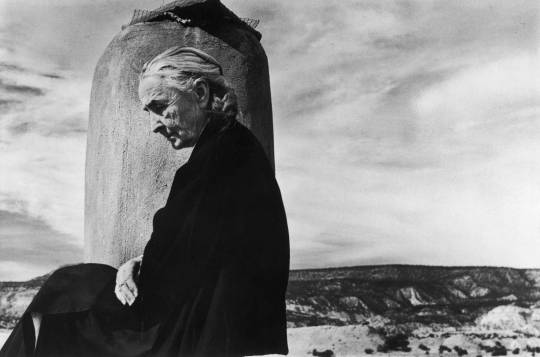
Georgia O'Keeffe photographed on the roof of her Ghost Ranch home in New Mexico, 1967. John Loengard—The LIFE Picture Collection/Getty Images. (Time, 2019)
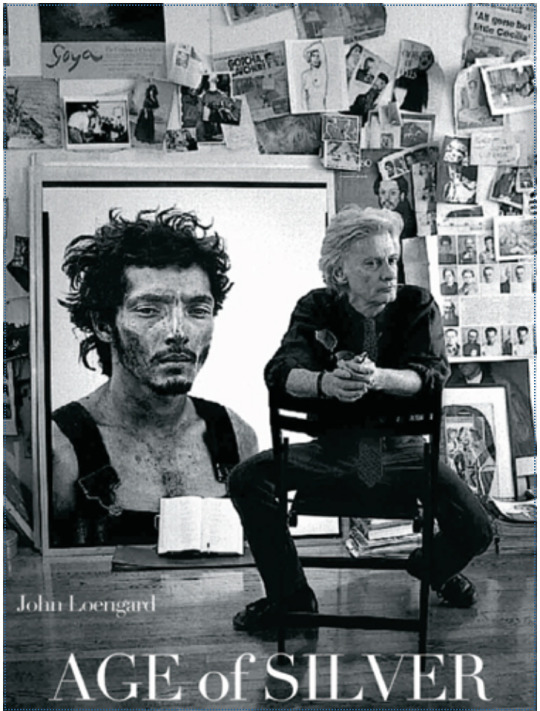
Image of Richard Avedon by John Loengard, 1994. (Photographers, Books and Hours, 2019)

Annie Leibovitz with her Assistant, Robert Bean on the Chrysler Building by John Loengard. (Johnloengard.com, 2019)
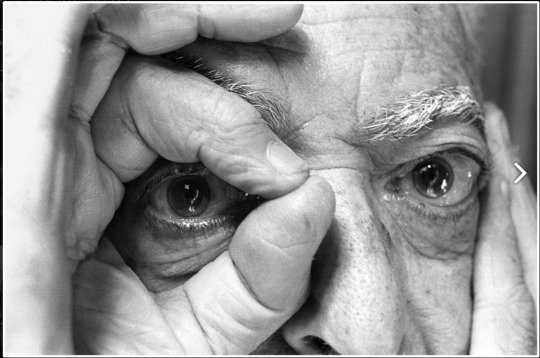
Brassai's Eye by John Loengard. (Johnloengard.com, 2019)
3. Alfred Eisenstaedt -
was a German-born American photographer who was well known for taking black and white shots of celebrities and is famous for using the 1.5 Armature. What is the 1.5 Armature?
“1.5 Armature: There are two ways to break down a 1.5 rectangle. The most basic is the 1.5 Armature. It is created by drawing two diagonals from each corner of a negative. Then draw their reciprocals from opposing corners, which intersect the diagonals at 90°. Through the Eyes of the Diagonal and their reciprocals, draw vertical and horizontal lines through their intersections. The 1.5 Armature was a very popular method used by Cartier Bresson early in his career.” (PetaPixel, 2019)
Below we have Marilyn Monroe in a black and white sweater. Her hair has a soft sheen and is worn natural. The background appears to be a barn structure and give the image a mid-tone grey texture.
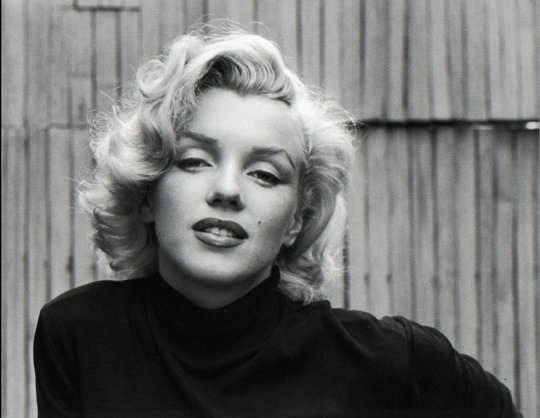
Marilyn Monroe (Black Sweater Landscape), 1953
Below is an iconic image seen from around the world. A crowd of happy people gathered on the street in celebration, a man tilts his girl back for a long overdue kiss. I have always loved this image and the start black and white contrast.

Alfred Eisenstaedt, VJ Day in Times Square, August 14-1945, Robert Mann Gallery (PetaPixel, 2019)
What can I say? We all know who this man is in the photo below. Albert Einstein sits writing. Love the rich blacks and the striped batter of the chair against the grey of his sweater and white of his hair.
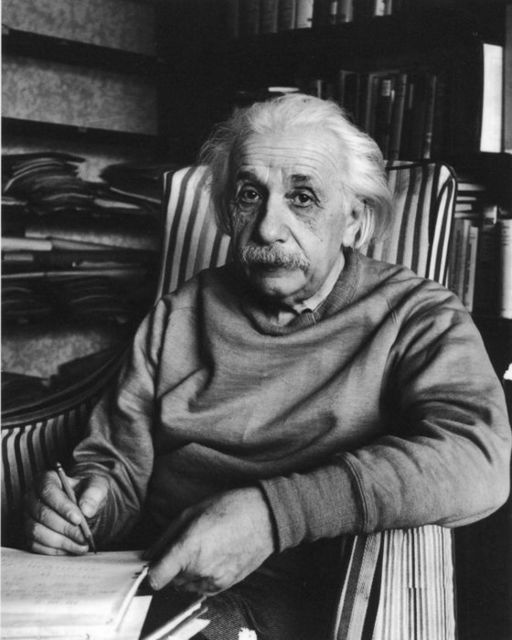
Alfred Eisenstaedt, Albert Einstein, Princeton, New Jersey, 1949, Robert Mann Gallery. (Artsy.net, 2019)
4. Stanislav Puchkovsky (Sean Archer on 500px) is self taught photographer from Yekaterinburg, Russia. He picked up his first camera in 2012 (a Lumix G3) and hasn’t stopped shooting since. And his light source? He uses natural light to capture his classically beautiful images. Amazingly, he shoots all his portraits in his apartment with window light. (Sarkar, Kosa and Sarkar, 2019)(Diamond, 2019)
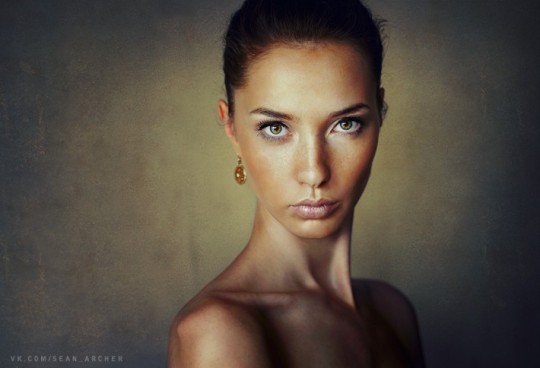
(Diamond, 2019)
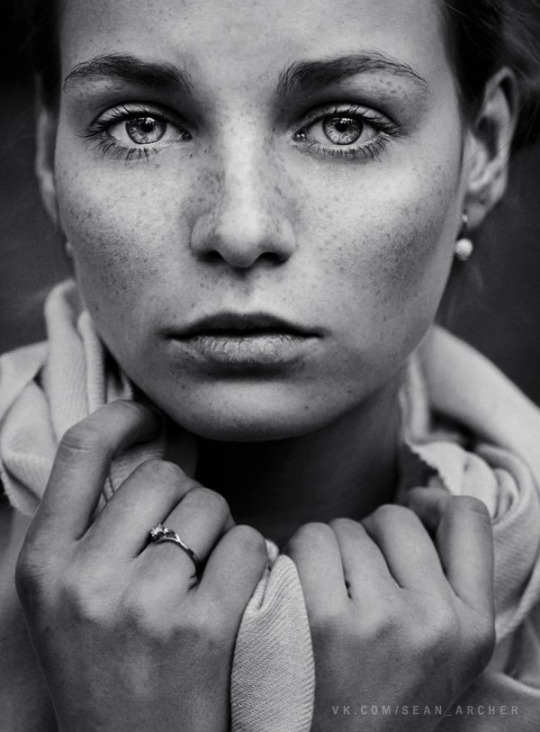
(Sarkar, Kosa and Sarkar, 2019)
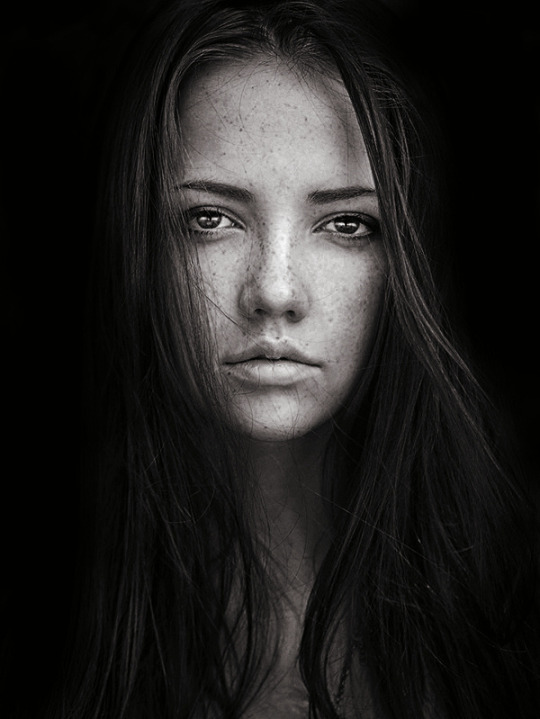
(Archer, 2019)
5. Magdalena Berny
Berny is a self-taught photographer born in 1976 and based in Poland. Her natural light child portraits have been recognised and published in “various press dedicated to photographs such as Digital Camera, Click Magazine, Modern Lens Magazine, Magzter, Great Inspire, just to name few.” (Symposion 2019, 2019)
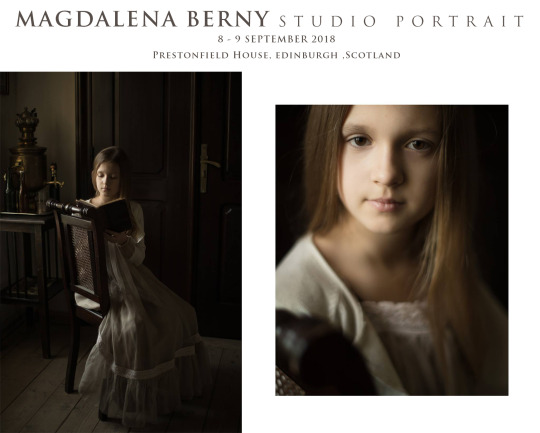
(Dreams Factory Photography, 2019)
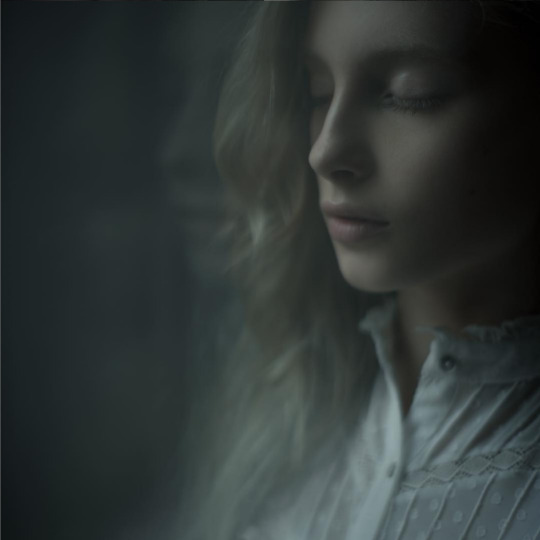
(Instagram.com, 2019)
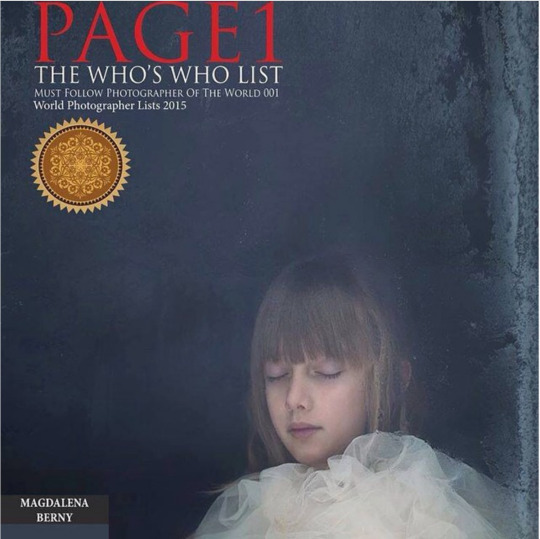
(Instagram.com, 2019)
Today we went on a walkabout from class in Glasgow to take images of each other (students). The group I was with only chose a silver/white reflector. The diffuser disappeared with the other students.
Here are but a few of the images I captured on the day . . .
Intensely Adam . . .
We used a refector to get light into the ‘cage-like’ structure. I like framing my subjects. I should have had Adam hide his earphones. I can always take them out in Photoshop. Here we are using a silver reflector. I can only assume that the colour cast on Adam’s face is from the rust covered bars surrounding him.
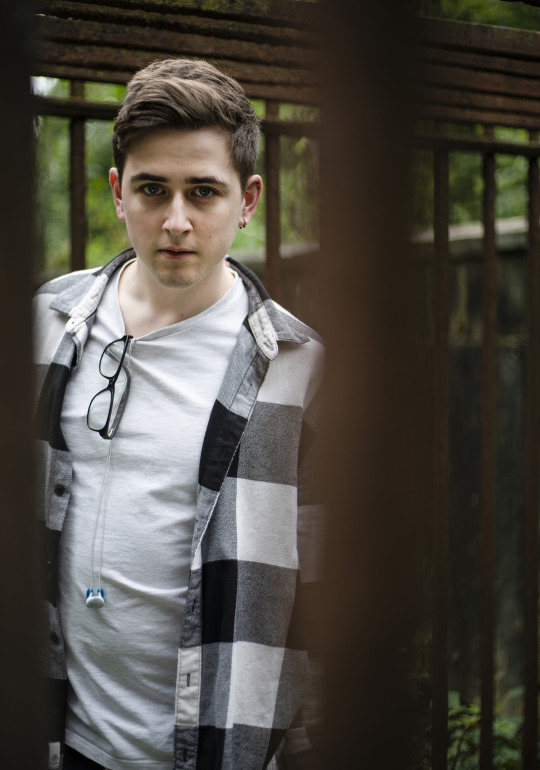
I’m not perfect. It has been a long time, and the excitement of taking images out with the class was the only reason I can fathom why I would make such a rookie mistake as allowing the top of the stone fence behind Adam to run right through his head. No refector.
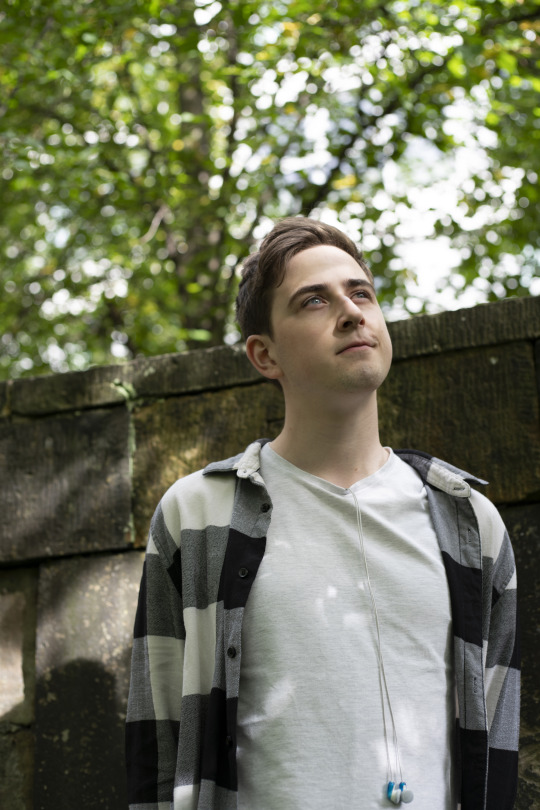
I like taking images of my subjects that help tell a story about who they are. Adam is extremely talented and has great instincts in photography. Here we are using no reflector.
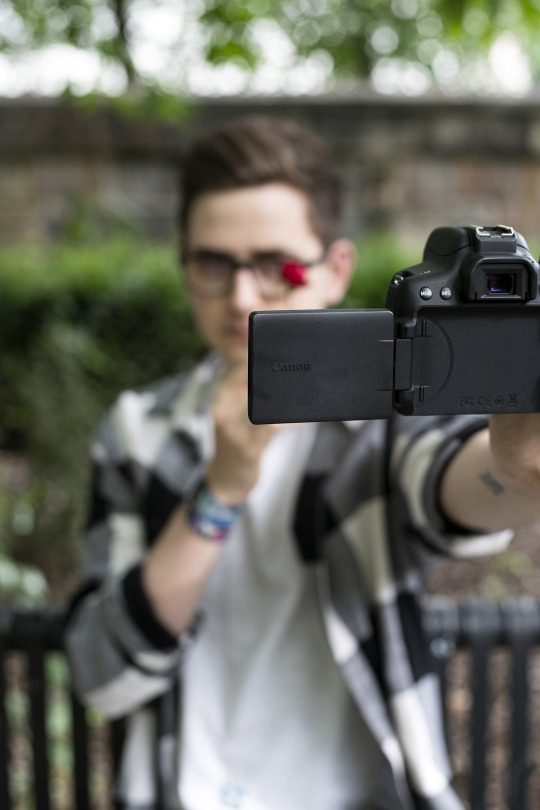
This is a woman with her dog. She was walking on the pathway where we were practicing and I asked if we could take her portrait. She was reluctant at first, but said yes. I could tell she was all about her dog. This image is a dog portrait with their human. (Again with the wall. It wouldn’t be so bad if it were through her shoulders.)
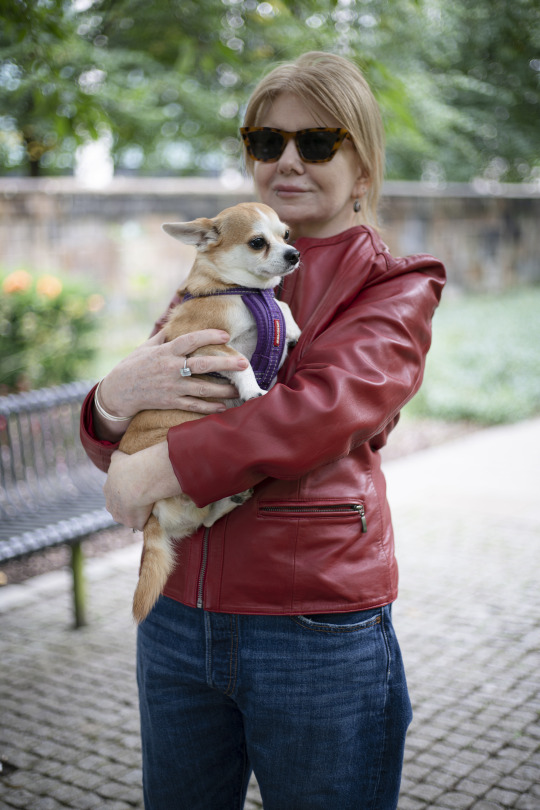
The lovely woman put down her dog and allowed me to take her photo. She didn’t take off her sunglasses.
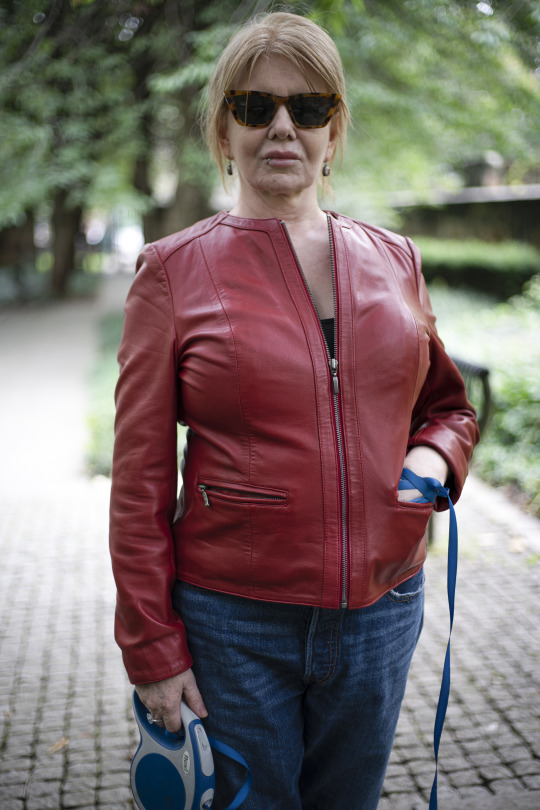
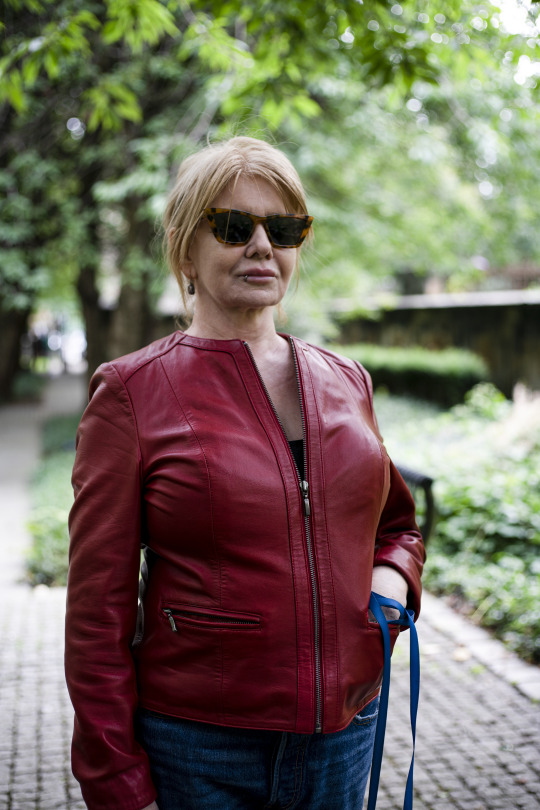
Adam being inquisitive . . .
Adam relaxing on the wall.
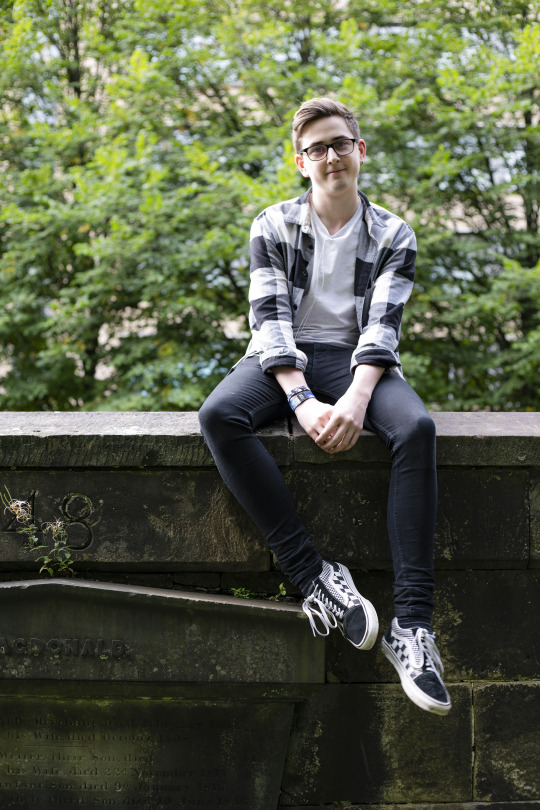
Adam rules on the wall . . . a bit over exposed on his face me thinks?
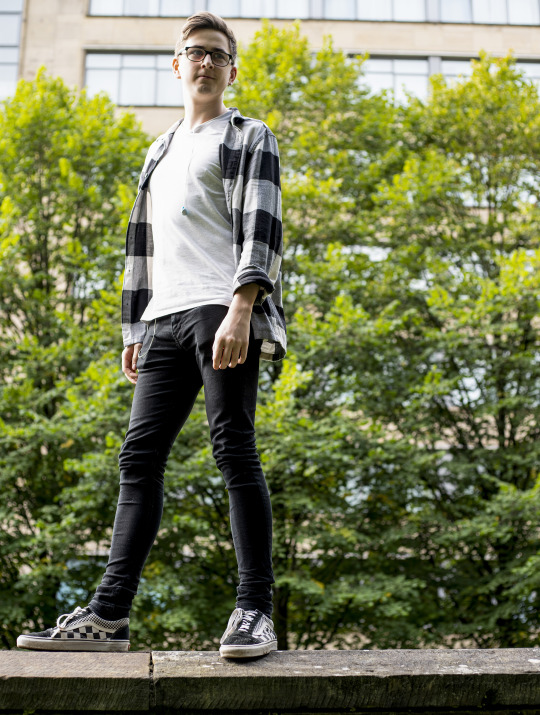
Adam peering into the lens.
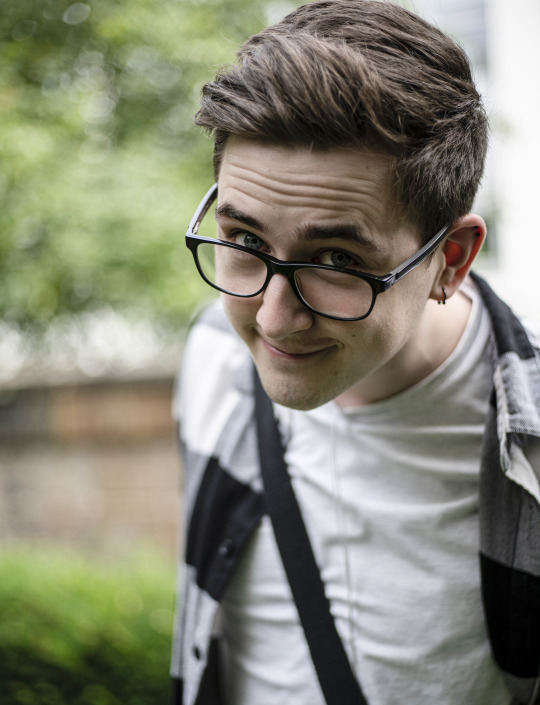
My brief, well underway . . .
For my first portrait, I chose my husband. We actually took photos for this portrait the same time and day as I was also working on my #Who project. This worked out well. I love the small Laundry cabin that is situated in the beautiful Finlaystone Country Estate; a large country estate in Renfrewshire near Glasgow, seat of the current Chief of the Clan MacMillan. We have visted here a few times, and I love walking about the trees. The laundry cabin is awesome with its old world objects.
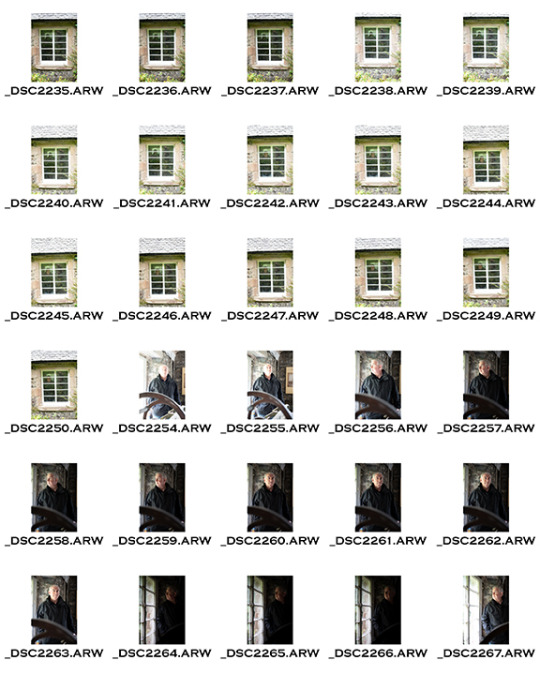
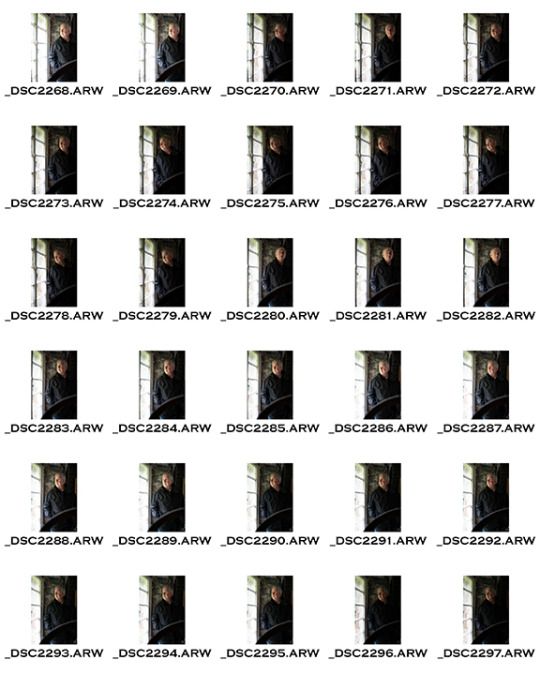
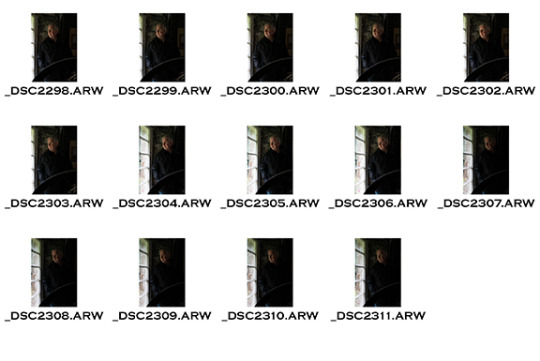
For my second portrait, I chose my friend Andrew. We travelled to Glasgow and visited our favourite place to eat because I knew they had big beautiful windows. The thing about the windows, they are not clean on the outside, so they diffused the light really well. The weather was 13 celsius and it was a cloudy day. Exposure was 1/100 sec at f4.5 using my 50mm lens. I had him sit really close to the window. What I noticed was, there was this white powdery looking dust on the outside of the window and it seemed to make the entire window, even though it was cloudy, glow with light.
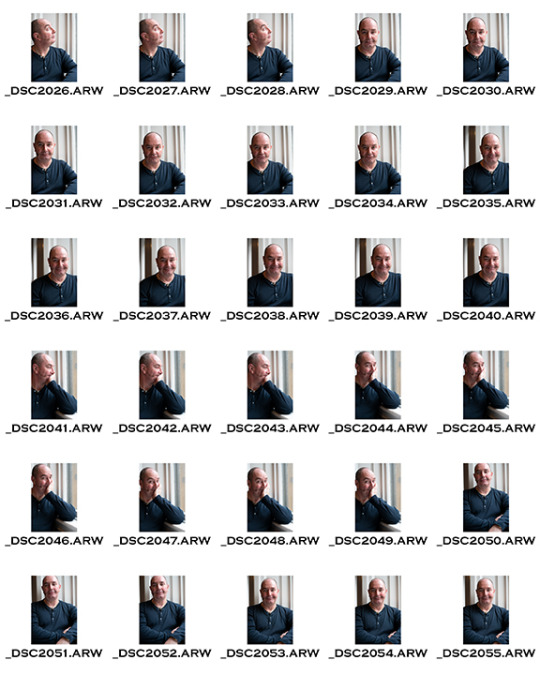
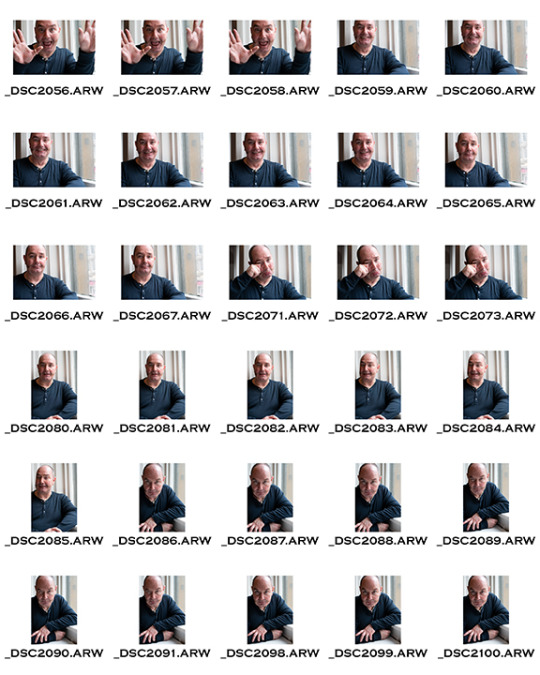

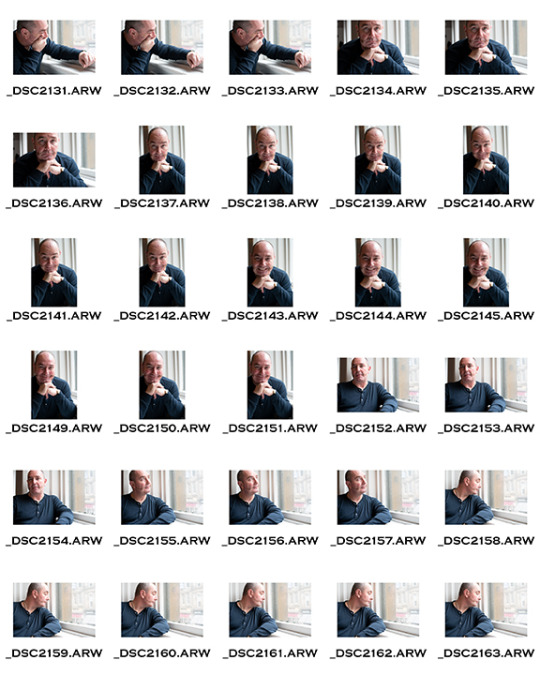
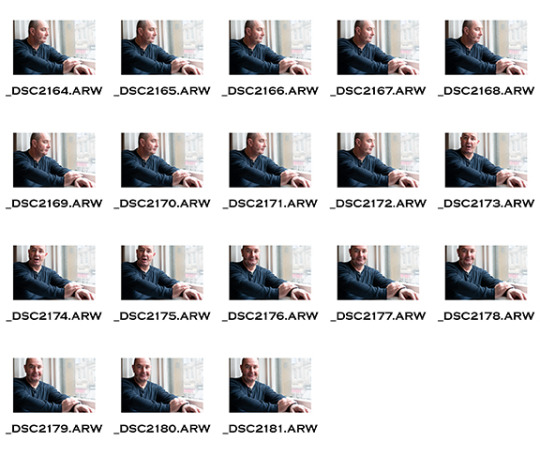
For my 3rd portrait, I am going to capture images of strangers, either on Glasgow streets, or perhaps walking in the woods. I have taken my first images of a very talented woman singing on Buchanan Street in Glasgow. I loved her soulful voice. I walked up and stood in front of her until I caught her gaze. I pointed at her, as she was singing, and pointed at my camera then to her. She nodded yes to my silent request. She kept singing while I took a few shots.
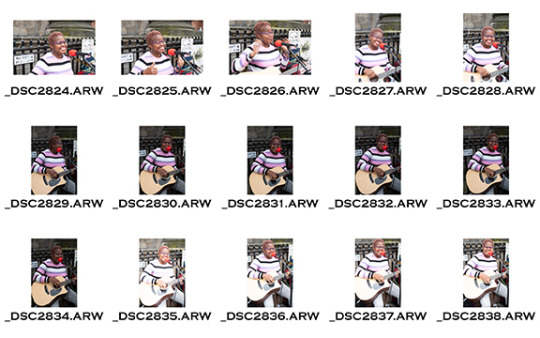
I will take further portraits of strangers in the coming week.
For my 4th portrait, I have captured images of my 93-year-old mother-in-law. She is a beautiful woman who lives in Port Glasgow high above the Clyde. There is a gorgeous veiw from her window. I wanted to use that as my backdrop as she has strong ties with her community and has been living in the same house for 65 years. As a matter of fact, my husband was born in the house.
Mum is always talkative, and she never sits still. She is the most inquisitive woman I know to date. Because I knew this setting up for our session, I asked her to stand next to her favourite place, the large picture window in her living room. She continued to ask questions so I took many images in an attempt to get the ones I really wanted.
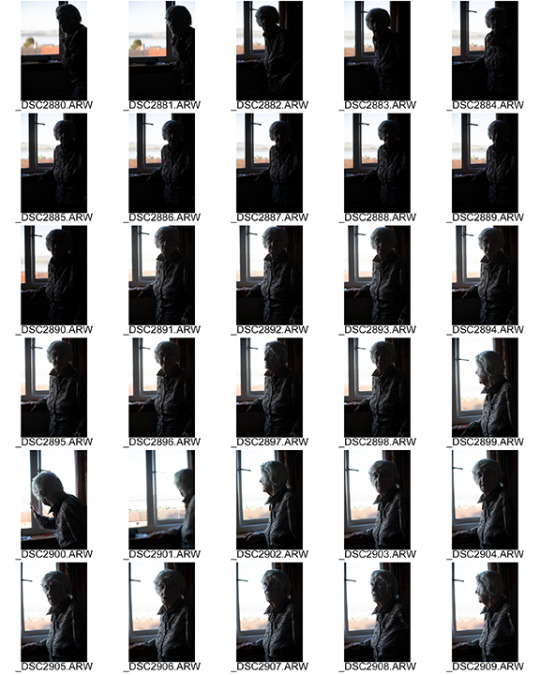
Mum was getting tired, so I had her sit every once in a while, every second that passed changed the available lighting dramatically.
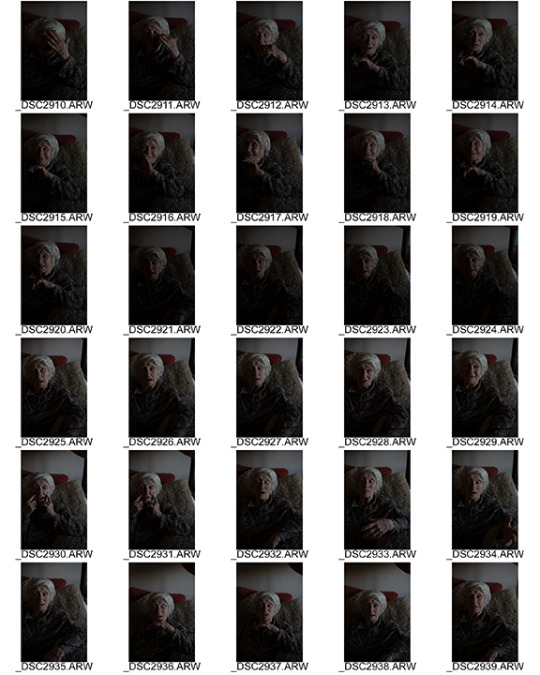
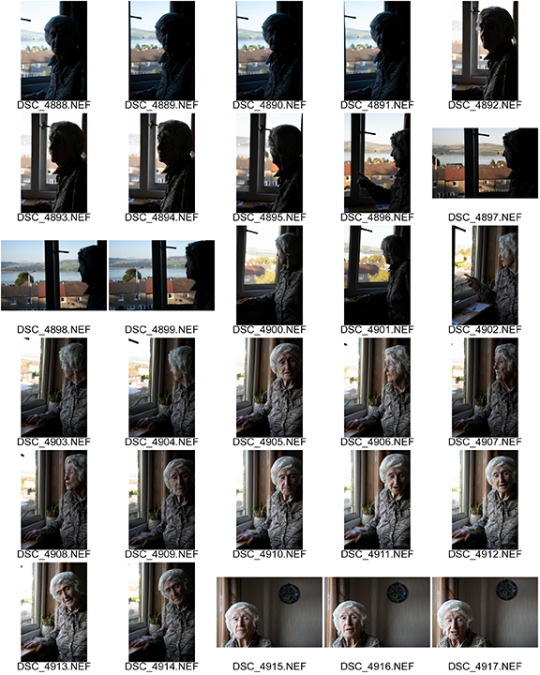
I decided later to go outside and capture mum in her window, as she can often be seen by the neighbours looking out.
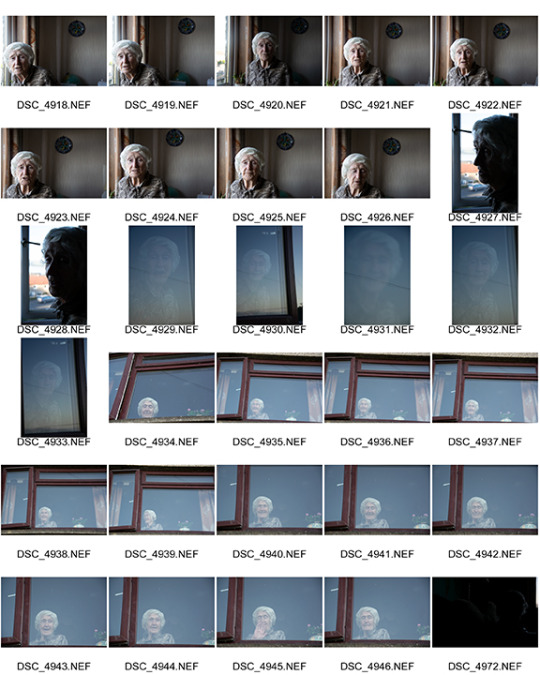
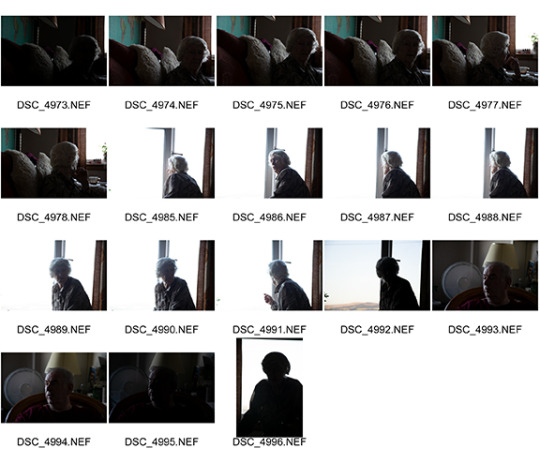
I mixed some more portrait shots of my mum in with the last. OOPS. The last shot was a dramatic silhouette of mum.
Prakel, D. (2007). Lighting. Lausanne, Switzerland: AVA, pp.56-70. (Prakel, 2007)
Lightroom, P. (2019). Choosing the Best Focal Length for Portraits. [online] Pretty Presets for Lightroom. Available at: https://www.lightroompresets.com/blogs/pretty-presets-blog/best-focal-length-portraits [Accessed 4 Oct. 2019]. (Lightroom, 2019)
Mansurov, N. (2019). What is Lens Distortion?. [online] Photographylife.com. Available at: https://photographylife.com/what-is-distortion [Accessed 4 Oct. 2019]. (Mansurov, 2019)
Hull, C. and >, M. (2019). What Is the Best Lens for Portraits? | Photography Equipment. [online] ExpertPhotography. Available at: https://expertphotography.com/best-lens-for-portraits/ [Accessed 30 Sep. 2019]. (Hull and >, 2019)
Abbott, J. (2019). Three prime lenses every portrait photographer needs to consider. [online] digitalcameraworld. Available at: https://www.digitalcameraworld.com/tutorials/the-best-portrait-lens-three-lenses-every-portrait-photographer-needs-to-consider [Accessed 30 Sep. 2019]. (Abbott, 2019)
Cambridgeincolour.com. (2019). Making the Most of Natural Light in Photography. [online] Available at: https://www.cambridgeincolour.com/tutorials/natural-light-photography.htm [Accessed 15 Sep. 2019]. (Cambridgeincolour.com, 2019)
Neirynck, F. (2019). Henri Cartier-Bresson (1908 – 2004) | Le Couperet. [online] Lecouperet.net. Available at: http://www.lecouperet.net/hcb/en/portraits-by-hcb [Accessed 15 Sep. 2019]. (Neirynck, 2019)
Ipoxstudios.com. (2019). You are being redirected.... [online] Available at: https://ipoxstudios.com/proof-that-henri-cartier-bresson-used-dynamic-symmetry-in-photography-4k-video/ [Accessed 15 Sep. 2019].
Photographers, A., Books, p. and Hours, O. (2019). Age of Silver: Encounters with Great Photographers | powerHouse Books. [online] Powerhousebooks.com. Available at: http://www.powerhousebooks.com/books/age-of-silver-encounters-with-great-photographers/ [Accessed 5 Oct. 2019]. (Photographers, Books and Hours, 2019)
Huxley-Parlour Gallery. (2019). Henri Cartier-Bresson | Photographer's Biography & Art Works | Huxley-Parlour Gallery. [online] Available at: https://huxleyparlour.com/artists/henri-cartier-bresson/ [Accessed 5 Oct. 2019]. (Huxley-Parlour Gallery, 2019)
Johnloengard.com. (2019). John Loengard – Photographs. [online] Available at: https://johnloengard.com/ [Accessed 5 Oct. 2019]. (Johnloengard.com, 2019)
Time. (2019). https://time.com. [online] Available at: https://time.com/3491091/georgia-okeeffe-invincible/ [Accessed 15 Sep. 2019].
Sarkar, G., Kosa, M. and Sarkar, S. (2019). Stanislav Puchkovsky (Sean Archer) - Incredible Portrait Photographer from Russia - 121Clicks.com. [online] 121clicks.com. Available at: https://121clicks.com/showcases/stanislav-puchkovsky-sean-archer-incredible-portrait-photographer-from-russia [Accessed 13 Sep. 2019].
Archer, S. (2019). Sean Archer on Fstoppers. [online] Fstoppers. Available at: https://fstoppers.com/profile/37142 [Accessed 15 Sep. 2019].
Diamond, D. (2019). Stanislav Puchkovsky (aka Sean Archer) is a Master of Natural Light Portraits. [online] Fstoppers. Available at: https://fstoppers.com/bts/stanislav-puchkovsky-aka-sean-archer-master-natural-light-portraits-9584 [Accessed 13 Sep. 2019].
PetaPixel. (2019). The Great Compositions of Photographer Alfred Eisenstaedt. [online] Available at: https://petapixel.com/2013/04/15/the-great-compositions-of-photographer-alfred-eisenstaedt/ [Accessed 30 Sep. 2019]. (PetaPixel, 2019)
Artsy.net. (2019). Alfred Eisenstaedt: Portraits of the Past | Robert Mann Gallery | Artsy. [online] Available at: https://www.artsy.net/show/robert-mann-gallery-alfred-eisenstaedt-portraits-of-the-past [Accessed 30 Sep. 2019]. (Artsy.net, 2019)
SLR Lounge. (2019). The Flash Modifier You Already Own - SLR Lounge. [online] Available at: https://www.slrlounge.com/workshop/the-flash-modifier-you-already-own/ [Accessed 15 Sep. 2019].
Sekonic.com. (2019). Working with the Sun | Photography How To Articles – What's Your Specialty? Photographer. [online] Available at: https://www.sekonic.com/united-kingdom/whatisyourspecialty/photographer/articles/working-with-the-sun.aspx [Accessed 15 Sep. 2019].
Digital-photo-secrets.com. (2019). What in the heck is that thing for? A photographer's guide to using the black flag :: Digital Photo Secrets. [online] Available at: https://www.digital-photo-secrets.com/tip/6721/guide-using-black-flag/ [Accessed 15 Sep. 2019].
Anon, (2019). [online] Available at: https://www.adorama.com/dodsck.html [Accessed 15 Sep. 2019].
Ghionis, J. (2019). How to Perfect Natural Light with a Collapsible Diffuser feat. Jerry Ghionis. [online] Westcott University. Available at: https://westcottu.com/using-the-omega-reflector-as-a-diffuser [Accessed 15 Sep. 2019].
Instagram.com. (2019). #magdalenabernyphotography hashtag on Instagram • Photos and Videos. [online] Available at: https://www.instagram.com/explore/tags/magdalenabernyphotography/?max_id=1254958811895111547 [Accessed 15 Sep. 2019].
Dreams Factory Photography. (2019). MAGDALENA BERNY - STUDIO PORTRAIT. [online] Available at: https://www.dreamsfactory.co.uk/event/magdalena-berny-studio-portrait [Accessed 15 Sep. 2019].
Instagram.com. (2019). PAGE1 (@page1mag) • Instagram photos and videos. [online] Available at: https://www.instagram.com/page1mag/ [Accessed 15 Sep. 2019].
Symposion 2019. (2019). Magdalena Berny | Children Portraits. [online] Available at: https://www.symposion.photo/en/magdalena-berny-en/ [Accessed 15 Sep. 2019].
1 note
·
View note
Text
Nikon d7000 price tracker

NIKON D7000 PRICE TRACKER MOVIE
NIKON D7000 PRICE TRACKER 1080P
NIKON D7000 PRICE TRACKER ISO
NIKON D7000 PRICE TRACKER PLUS
Nikon replaced the older Nikon D90 with this model and later D7000 was replaced with Nikon D7100. Neewer 750II TTL Flash Kit for Nikon D7200 D7100 D7000 D5500 D5300 D5200 D5100 D5000 D3300 D3200 D3100 D3000 D700 D600 D500 D90 D80 D70 D60 D50 Cameras with Wireless TriggerColor Filters: 9.8: Check Price on Amazon: 3: Opteka IF-980 i-TTL Dedicated Auto-Focus Speedlight Flash with LCD Display for Nikon Z50: 9. Yes, the D800 and D4s are more expensive, but also a lot more clumsy. If money matters, this D7000 is still your best buy in 2014. Today the D610 is the same thing in a bigger package with a larger sensor, and the D7100 is the same thing with a white finder LCD instead of green. Which battery does the Nikon D7000 take The Nikon D7000 is a enthusiast DSLR that features a 16.1MP sensor. Let's look at how the size of the Nikon D7000's APS-C sensor compares with other standard sensor sizes. Launched in November 2010, Nikon D7000 is a 16.0MP Advanced DSLR camera with a APS-C (23.6 x 15.7 mm ) sized CMOS sensor, weather sealed body and Nikon F lens mount. Intro New Specs Accessories Performance Compared Recommendations. The D7000 was Nikon's most advanced camera at any price in 2010. Of course, buying pre-owned means that you can get a used Nikon D7500 for virtually the same price as a new D7200, so there are ways to get great deals on both cameras. You can find the details of their analysis of Nikon D7000 here. Nikon D7000 sensor has been tested by DxO Mark and got an overall score of 80 for its image quality.
NIKON D7000 PRICE TRACKER 1080P
Check the comparison of Nikon D7000 vs Canon M6 MII or take a look at Highest resolution DSLR cameras list.ĭxOMark is a benchmark that scientifically assesses image quality of camera sensors. Nikon D7000 DSLR Camera Zoom Nikons D7000 features a 16.2 MP DX-format CMOS sensor, 6 fps continuous shooting and breathtaking Full 1080p HD Movies with full time autofocusPricing Valid May 27th Thru Aug. Canon M6 MII with its 33.0MP sensor is leading in this class. Nikon D7000 16.2 Megapixel Digital SLR Camera with 18-105mm Lens (Black) Visit the Nikon Store 369 ratings 89 answered questions Price: 999.00 See more About this item High Resolution 16. Nikon D7000 is not the highest resolution APS-C camera.
NIKON D7000 PRICE TRACKER ISO
D7000 has a native ISO range of 100 - 6400 which can be boosted to 25600 and it can save files in RAW format which gives you a wider room for post processing. You can shoot at maximum resolution of 4928 x 3264 pixels with aspect ratios of and 3:2. There is one negative though: in bright, high-contrast conditions the camera has a tendency to overexpose - unfortunately by quite a large degree.Nikon D7000 has a 16.0MP APS-C (23.6 x 15.7 mm ) sized CMOS sensor and features Expeed 2 processor. At a pixel level low ISO images are very slightly soft but still show very good detail which can be further increased by shooting in RAW. Default JPEGs are clean of artifacts and with natural colors and tonality. You can choose you D7000 deals at Adorama, Amazon, B&H Photo Video, Best Buy. The Nikon D7000 produces high quality output in almost any shooting situation. And you may also try refurbished Body Only for 675.
NIKON D7000 PRICE TRACKER MOVIE
Other changes include the same combined live view/movie switch control as the 3100, and a significantly upgraded movie specification, up to 'full HD' - 1920x1080 resolution at 24fps. Shoot up to 6 fps or record every second of the action with.
NIKON D7000 PRICE TRACKER PLUS
The new camera boasts a 39-point AF array with 9 cross-type AF points and works in collaboration with a new 2016-pixel RGB metering sensor to allow 3D AF tracking. The high resolution, multi-featured Nikon D7000 gives you 16.2 megapixels of vividly detailed images, a more sensitive DX-format CMOS sensor that delivers high ISO with low noise, plus various automatic and customizable settings to take your pictures and videos from great to gorgeous. All of these pixels are packed onto a newly developed CMOS sensor, which offers a 'standard' ISO span of 100-6400, expandable up to the equivalent of ISO 25,600. EN-EL15 EN-EL15A Battery For Nikon D7000 D7100 D7200 D850 D750 Nikon D7500 Battery D810 D500 D800 D610 D600 EN-EL15B Battery L5, Product Rating: 1.0 Save: US 7.67 From Original Price: US 15. At 16.2MP the D7000 offers the second highest resolution of any Nikon DSLR, behind only the 24Mp D3X. Although ergonomically, the D7000 is a very close match for the D90, its overall 'feel' is considerably more serious, thanks to a magnesium alloy body shell and slightly thicker rubber coating on the hand grip and rear of the camera.

0 notes
Text
Nikon D3200 24.2 MP CMOS Digital SLR with 18-55mm f/3.5-5.6 Auto Focus-S DX VR NIKKOR Zoom Lens (Black) (OLD MODEL)
Nikon D3200 24.2 MP CMOS Digital SLR with 18-55mm f/3.5-5.6 Auto Focus-S DX VR NIKKOR Zoom Lens (Black) (OLD MODEL)
Price: (as of – Details) Don’t let the D3200’s compact size and price fool you—packed inside this easy to use HD-SLR is serious Nikon.power: a 24.2 MP DX-format CMOS sensor that excels in any light, EXPEED 3 image-processing for fast operation and creative in-camera effects, Full HD (1080p) movie recording, in-camera tutorials and much more. What does this mean for you? Simply stunning photos…

View On WordPress
0 notes
Text


Starter Cameras:
If you are trying to find a good photography camera on a budget, these are two that I look up and did some research on. The first camera is a Canon EOS T7 Rebel. Its a budget friendly camera if you are just starting in photography with an 24MP-APS size sensor. The EOS T7 also features with a 3-inch, 920,000-dot LCD and, of course, an optical viewfinder.The Rebel T7 also has Wi-Fi with NFC for easy sharing via Canon's Camera Connect app. The second camera is a Nikon D5600 DSLR Camera with 18-55mm Lens. This camera is a sleek DSLR that blends multimedia imaging capabilities with versatile wireless technology. Centered around a 24.2MP DX-format CMOS sensor and EXPEED 4 image processor, the camera offers a sensitivity range from ISO 100-25600 to benefit working in an array of lighting conditions, and the sensor and processor combination also supports continuous shooting up to 5 fps for working with moving subjects. Both of these camera are great to start with.
0 notes
Text
Nikon D500 DSLR Camera 20.9MP CMOS Sensor with AF-S NIKKOR 24-120mm f/4G ED VR Lens, 2 Pack SanDisk 128GB Memory Card, Backpack, Full Size Tripod & A-Cell Accessory Bundle (Black)
Nikon D500 DSLR Camera 20.9MP CMOS Sensor with AF-S NIKKOR 24-120mm f/4G ED VR Lens, 2 Pack SanDisk 128GB Memory Card, Backpack, Full Size Tripod & A-Cell Accessory Bundle (Black)
Price: (as of – Details) Nikon D500 DSLR Camera is DX-format 20.9MP CMOS sensor is paired with the EXPEED 5 image processor. This bundle included Nikon AF-S NIKKOR 24-120mm f/4G ED VR Lens (Camera Compatibility: Nikon D500, D850, D780, D300s, D3100, D3300, D3400, D3500, D3x, D4s, D5, D5000, D5100, D5200, D5300, D5500, D5600, D6, D610, D700, D7000, D7100, D7200, D750, D7500, D800e, D810, D810a,…

View On WordPress
0 notes
Text
All about Nikon Z 6 Mirrorless Digital Camera
Part of Nikon's next step in their imaging journey, the Nikon Z6 Mirrorless Camera is positioned as the "all-arounder" within the new Z System. Beginning with the Z Mount itself, a large-diameter design with a short 16mm flange distance allows Nikon to create compact, yet powerful cameras and develop more advanced optics. The Z6 is among the first in the series, and features a high-performing FX-format 24.5MP BSI CMOS sensor and the EXPEED 6 Image Processing Engine delivering outstanding image quality and speed with a native sensitivity range of ISO 100-51200.
On the sensor you will find an advanced phase-detect autofocus system using 273 points covering 90% of the image area, and the sensor features 5-axis Vibration Reduction technology for stabilized photos and video regardless of the lens used. This advanced hybrid AF system will also benefit video. The Z6 features UHD 4K recording at up to 30p and can use the N-Log gamma profile along with the camera's 10-bit HDMI output to create cinema-quality video.
As with many mirrorless systems, the Z Series boasts a much more compact form factor than its DSLR counterparts. The Z6 is no exception with its slimmed down design and lighter build, though it maintains the weather sealing and ergonomics for which Nikon is known. The camera features multiple displays and screens for ease of use, including a 0.80x 3.6m-dot EVF with NIKKOR optics and a Fluorine coating, ensuring clear viewing. The rear of the camera is equipped with a 3.2" 2.1m-dot tilting touchscreen LCD while the top offers a dot-matrix OLED for quickly checking settings. For storage, the Z6 has a single XQD card slot that is compatible with CFexpress for faster speeds in the future. Additionally, the body is equipped with both Wi-Fi and Bluetooth.
Nikon Z System
Introducing the Z mount, Nikon's full-frame mirrorless system promises to deliver class-leading image quality and optics in a compact form factor. The Z mount itself makes much of this possible with a 17% larger inner diameter than the F mount, enabling the use of more advanced optics and lens designs, including ultra-fast f/0.95 options. For minimizing camera and lens size, the Z mount features a 65% shorter flange distance, measuring just 16mm, which allows for dramatically slimmed down body designs. The larger mount also supports faster and larger-volume communications between the body and lens to improve overall performance throughout the system.
24.5MP FX-Format BSI CMOS Sensor and EXPEED 6 Processor
A 24.5MP BSI CMOS sensor is used for all-around shooting, impressive low-light quality, and fast readout speeds to benefit continuous shooting, movies, and time-lapse recording. The back-illuminated design of the sensor affords noticeably cleaner high-sensitivity output for reduced noise when working at high ISO values, up to a native ISO 51200, as well as vivid and smooth quality at sensitivities as low as ISO 100. Benefitting the sensor is the apt EXPEED 6 image processor, which affords a wealth of speed throughout the camera system, including the ability to shoot continuously at 12 fps in raw.
4K UHD Video Recording
Utilizing the sensor and processor attributes for more than just still imagery, the Z6 is also a more-than-capable multimedia camera. Video recording is possible at UHD 4K (3840 x 2160) using either the full-frame area or a DX crop area in 30p, 25, or 24p frame rates. Full HD 1080p video recording is also supported at up to 120p for slow motion playback, and video files can be saved to the in-camera memory cards or as an uncompressed file to an optional external recorder via HDMI out.
Advanced video functionalities have been added with the Z6. This includes the N-Log gamma for capturing flat-looking footage that maximizes dynamic range. Other additions are the ability to output high-quality 10-bit data over HDMI and an Electronic VR function for smooth handheld shooting. Focus Peaking can be used to benefit manual focus control and a Zebra Stripes option is also available to help detect over-exposed areas within the frame. Audio recording can be handled using the built-in stereo microphone or an optional external mic can be added via the 3.5mm stereo jack for greater control over quality, and live monitoring is possible via the headphone jack.
273-Point Phase-Detect AF System
Located on the sensor is an array of 273 phase-detect autofocus points covering 90% of the image area both vertically and horizontally. This provides fast and accurate focusing for both stills and video and with a wide coverage area, subject tracking will work out to near the edges of the frame. Hybrid AF is available for video, which will automatically switch between phase- and contrast-detect systems to provide smooth focus during shooting. Additionally, the latest NIKKOR Z lenses are optimized for silent operation.
Body Design
Built-in to the body is a 5-axis sensor-shift Vibration Reduction mechanism for up to 5 stops of stabilization regardless of the lens used. This system also works with adapted lenses when using the optional FTZ Adapter where 3-axis stabilization is used.
A large 3.2" 2.1m-dot LCD screen is available for bright, clear, and vivid image playback and live view shooting. The screen has a tilting design to benefit working from both high and low angles, and it is also a touchscreen for more intuitive operation, navigation, and settings control.
A 3.6m-dot electronic finder is present for comfortable eye-level viewing. It has a high 0.80x magnification and uses NIKKOR optics to guarantee a sharp, clear image. The finder also has a Fluorine coating for easier cleaning.
The top panel of the Z6 is configured with a dot-matrix OLED. This low-energy display provides quick access to important camera settings.
Configured with one XQD memory card slot, the camera will be able to quickly save images. The slot is compatible with CFexpress, enabling support for future media.
A robust magnesium-alloy chassis is both dust- and weather-resistant to benefit working in harsh climates and inclement conditions.
The ergonomic grip and overall form factor is shaped to benefit handling for extended periods of time and is further accentuated by an anti-slip material and a joystick for seamless settings and focus point selection.
Built-in SnapBridge connectivity to enable seamless transfer of low-resolution imagery as well as remote shooting capabilities. BLE (Bluetooth Low Energy) and Wi-Fi enables communication between the camera and a smart device and, additionally, the mobile device can remotely trigger the shutter and display a live view image from the camera to enable working from a distance.
Included EN-EL15b rechargeable lithium-ion battery provides approximately 310 shots per charge, and in-camera charging is supported. This camera is also compatible with EN-EL15 and EN-EL15a batteries, however do not support in-camera charging.
0 notes
Text
Corning launches Gorilla Glass DX and DX + for better phone cameras
Corning launches Gorilla Glass DX and DX + for better phone cameras
https://theministerofcapitalism.com/blog/corning-launches-gorilla-glass-dx-and-dx-for-better-phone-cameras/
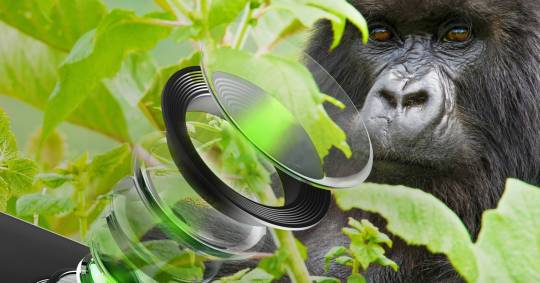
Sometime in 2019, phone buyers just started accepting ugly camera modules. The extraordinarily good photographs captured by these cameras justified their three- or six-eye designs. And by 2020, society’s far greater evils prevailed over outrage over sealed-sized camera shots.
Where consumers saw baffling camera modules, glassmaker Corning saw opportunities. Corning, which these days is best known for making the Gorilla glass covering almost all high-end smartphones, he noted that the latest smartphone camera designs were more prone to scratches, both because of the enlarged surface area of the lens modules and the way the lenses of the phones protrude. When they appear scratched enough on the lens, the quality of the photo begins to suffer. Turns out there’s a glass for that.
Corning has announced today its latest compound: a new version of Gorilla Glass optimized for smartphone camera lenses. Technically there is already a version of the new compound, called Gorilla Glass DX and DX +; in July 2018, the company launched this product for use on smartwatch faces, promoting its “improved optical clarity, sunlight readability, exceptional hardness and scratch resistance”. But Corning had to redesign the DX and DX + compound for smartphones so it could claim a certain level of scratch resistance. without compromising photo and video quality essentially by maximizing the amount of optical clarity while selling durability.
“We’re seeing requirements for better light management start to emerge in a couple of different device verticals,” says Scott Forester, Corning’s vice president of marketing and innovation for the company’s Gorilla Glass division. “As smartphone camera systems become more sophisticated, all these lenses and this bump away from the camera have caused scratches. [Manufacturers] I said, “Well, I can’t use an anti-reflective film, so I just have to deal with what I have today,” which is mostly glass. “
Forester describes how the properties of this compound make it more ideal for camera cover lenses for smartphones. Cover lenses typically have an anti-reflective coating, which reduces glare and allows more light through the lens, allowing only 95% of the light available on the camera’s sensor to reach. Corning claims that this new version of DX and DX + for smartphone lenses allows the camera to capture 98% of the light while maintaining the scratch resistance of the standard Gorilla Glass. (It also states that the DX + product is close to the scratch-resistant qualities of sapphire crystal, a synthetic material known for its durability, transparency and the cost it brings to appliances.)
Video credit: Corning
Corning declined to share which specific phone models will be shipped soon with Gorilla Glass DX or DX +. And consistent with its past behavior, Corning declined to comment on the nature of its partnership with Apple. He said Samsung will be the first customer to use Gorilla Glass DX for the camera covers of their smartphones. Samsung is it is expected to unveil at least five new products next month at its annual Unpacked Summer event, which could include folding phones and new laptops; it’s likely to be the official launch of this new Corning product as well, though Corning didn’t confirm that.
Corning isn’t the only manufacturer looking to enhance photos from smartphones, no matter how progressive, with technology designed to enhance lenses instead of image sensors. Julian Chokkattu of WIRED wrote earlier this year about a startup called Metalenz, which replaces the current stack of multiple camera lenses with a single lens built on a small glass wafer.
“Look very closely at the microscope and you will see nanostructures that measure one-thousandth the width of a human hair,” Chokkattu wrote. “These nanostructures bend light rays in a way that corrects many of the shortcomings of single-lens camera systems.” This space-saving technology, if widespread, could allow more phone manufacturers to put sensors and cameras under the screen and could be used in other products.
No ugly camera shots, you say? Register me … even though we have already forgiven its existence.
Bigger cable stories
Source link
0 notes
Text
Nikon D500 DSLR Digital Camera w/ 16-80mm f/2.8-4E ED VR Lens
The Nikon D500 is characterized by its robust physical construction, apt imaging capabilities, and of course, a more compact, sleek form factor than its FX brethren. Revolving around a 20.9MP CMOS sensor and EXPEED 5 image processor, this camera appeals to both still and video shooters with its fast 10 fps continuous shooting rate and 4K UHD video recording abilities. The sensor and processor also combine to avail a native sensitivity range up to ISO 51200, which can be further expanded to ISO 1640000 for working in dark and difficult lighting conditions. Benefitting the fast shooting performance, the D500 is also characterized by its expansive Multi-CAM 20K 153-point AF system, which features 99 cross-type points for fast performance and accurate subject tracking capabilities. While sleek in stature, the D500 is by no means slim on functionality and versatility.

Besides the imaging assets, this advanced DSLR also features an impressive handling design that incorporates a 3.2", 2.36m-dot, tilting LCD touchscreen, which affords a comfortable means for working from high and low angles. An updated version of SnapBridge is also featured, which provides Wi-Fi connectivity with NFC, as well as Bluetooth Low Energy technology for linking your mobile device for wireless image sharing. In addition to the convenience features, the D500 is housed within a durable magnesium alloy chassis that is both dust- and weather-sealed for working in inclement conditions and harsh environments.
20.9MP DX-Format CMOS Sensor and EXPEED 5 Image Processor
The DX-format 20.9MP CMOS sensor is paired with the EXPEED 5 image processor to provide an esteemed mixture of high sensitivity, nuanced image quality, and fast overall performance. At native values, a sensitivity range from ISO 100-51200 permits working in a broad array of lighting conditions, an can be further expanded to ISO 50-1640000 (Lo 1 to Hi 5) to handle the most challenging of situations. The mixture of resolution and sensor size also contributes to clean image quality and smooth color transitions with reduced noise throughout the sensitivity range.
In addition to benefitting image quality, the EXPEED 5 processor also affords a wealth of speed throughout the camera system, including a top continuous shooting rate of 10 fps with full-time autofocus and exposure metering. Up to 200 frames can be recorded in a single burst, even when shooting 14-bit lossless compressed NEF files. Additionally, slower continuous shooting rates are available as well as a Quiet Continuous Mode for shooting 3 fps in noise-sensitivity areas.
4K UHD Video Recording
Capable of recording more than just stills, the D500 supports 4K UHD video recording at 30, 25, and 24 fps frame rates and Full HD/HD recording at up to 60 fps, along with the ability to save movie files to the in-camera memory cards or as an uncompressed file to an optional external recorder via HDMI out. For maintained quality and versatility in how your movies look, three image area options are available:
4K UHD movie image format is an area that provides a 1.5x increase in the effective focal length of the lens in use and is reserved for 4K 3840 x 2160 recording.
1.3x-based movie image area provides a 1.3x crop of the DX sensor and is used for recording FULL HD and HD video. DX-based movie image format utilizes the full width of the DX-format sensor and is used to record Full HD 1920 x 1080 and HD 1280 x 720 video. This setting is well-suited for shallow depth of field effects and provides the widest field of view.
As with still shooting, the wide range of sensitivities is available for recording in low- and bright light conditions, ranging from expanded ISO 100-1640000, and sensitivity values are manually adjustable via the dedicated movie-shooting menu. Also, a video-optimized Flat Picture Control mode can be used during recording to flatten the overall contrast curve for more control during post-production and color grading.
Benefitting handheld shooting, an Electronic Vibration Reduction feature can be used during Full HD and HD recording, which minimizes the appearance of camera shake across three axes to control horizontal, vertical, and rotational movements. Additionally, Active D-Lighting can also be employed during Full HD/HD shooting to preserve highlight and shadow detail when working in high-contrast situations.
In regard to handling, a dedicated power aperture button (Pv) makes it possible to achieve smooth, continuous exposure transitions when switching from light to dark areas and Auto ISO can also be used to maintain consistent brightness when working in changing light situations. Audio recording can be handled using the built-in stereo microphone or an optional external mic can be added via the 3.5mm stereo jack for greater control over quality. Regardless if using the in-camera mic or an external mic, audio levels can be adjusted in 20 increments and live monitoring is possible via the headphone jack, which affords 30 different volume levels for playback.
In addition to straight movie recording, time-lapse recording, for up to 9999 consecutive frames shot over the course of up to one week, is also possible with up to 4K UHD/30p output from the camera. 153-Point Multi-CAM 20K Autofocus System Matching the speed and imaging capabilities is the apt Multi-CAM 20K AF system, which features 153 total phase-detection points, including 99 cross-type sensors for improved subject recognition, and 55 of the points are selectable for greater compositional freedom. Benefitting the use of super telephoto lenses and teleconverters, 15 of the points, including 9 selectable points, are compatible with an effective aperture of f/8 and all 153 points support working with effective apertures of f/5.6 or brighter.
Complementing the abundance of focusing points is a dedicated AF engine, which offers quick response times to benefit tracking fast and randomly moving subjects, even at the top 10 fps shooting rate. The AF engine also contributes to enhanced focusing sensitivity, with all points capable of focusing -3 EV and the center point capable of reading at -4 EV for working in very dark, low-contrast situations.
Furthering the versatility of the focusing system, seven different AF-area modes can be selected to support varying types of subjects matter:
Single-Point AF: The camera uses a single point to find focus.
Dynamic-Area AF: Available with 25, 72, or 153-point selections, this mode uses a primary single focus point to lock onto focus, and then makes use of the surrounding points for maintaining focus while tracking erratically-moving subjects.
Group-Area AF: This mode treats smaller groups of AF points as a single point for a wider field of recognition, and is well-suited to tracking faces or other detailed subjects.
3D-Tracking: Using a subject's color information, this mode utilizes all 153 points to maintain focus on a moving subject while half-pressing the shutter button.
Auto-Area AF: This mode makes use of all 153 points to quickly identify the main subject, and then prioritizes recognized faces as portrait subjects in any AF servo mode.
In addition to the range of AF-area modes, an AF lock-on function can also be used to improve subject tracking performance, and can be adjusted by two parameters-quick or delayed blacked shot AF response and erratic or steady subject movement. By configuring these settings, the AF performance can be optimized to handle a wide variety of subject movement types.
Lastly, a unique auto AF fine-tune function can be employed to ensure the best possible focus for each mounted lens. Rather than relying on photographing distance charts, this function lets you achieve precise focus manually in live view, and then have the AF system calibrate itself to the fine-tuned focus position in order to alleviate front- and back-focusing issues.
Body Design
A large 3.2" rear LCD monitor features a high 2,359k-dot resolution for clear, vivid playback and live view shooting. The monitor is also a touchscreen for more intuitive menu navigation and settings control, and is usable while shooting, giving you the ability to choose a focus point or an area to set the white balance from. The screen can also be used as a keyboard for quickly entering notes, copyright info, or IPTC information. Additionally, it features a tilting design for easier visibility when shooting from high and low working angles.
A bright pentaprism optical viewfinder offers 100% frame coverage and a 1.0x magnification and incorporates an organic EL display system to provide shooting information for seamless adjustment over camera settings without removing your eye from the viewfinder. Additionally, the optical glass features enhanced coatings for increased brightness, contrast, and color neutrality for more lifelike viewing.
Extending file saving capabilities by permitting overflow recording, in-camera file duplicating, or the ability to segregate raw and JPEG files between two cards, the D500 is configured with both SD and XQD memory card slots.
A robust magnesium alloy chassis is both dust- and weather-resistant to benefit working in harsh climates and inclement conditions. The ergonomic grip and overall form factor are shaped to benefit handling for extended periods of time and are further accentuated by anti-slip, textured controls and easy-to-open card slot covers.
Additionally, most of the rear buttons on the rear of the camera are illuminated for greater visibility when working in dim lighting conditions. Two configurable Fn buttons, one front-facing and the other rear-facing, may be assigned for checking depth of field or used for other shooting controls.
The included EN-EL15 rechargeable lithium-ion battery is CIPA-rated to last for approximately 1240 shots per charge in single-frame release modes. The optional MB-D17 Multi-Power Battery Pack can also be added to further extend shooting times.
SnapBridge Wi-Fi Connectivity
Supporting a wealth of sharing and tagging possibilities, the D500 features built-in SnapBridge Wi-Fi connectivity to enable seamless transfer of imagery as well as remote shooting capabilities. BLE – Bluetooth Low Energy technology enables communication between the camera and a smart device. Additionally, the mobile device can remotely trigger the shutter and display a live view image from the camera to enable working from a distance. NFC (Near Field Communication) is also supported to provide a quick and simple tap-to-connect method for linking your mobile devices with the camera.
For faster wireless performance, the D500 is also compatible with the optional WT-7A Wireless Transmitter enabling transmission of image files via FTP server or computer at speeds of up to 866.7 Mbps. Scene Recognition System and Exposure Metering The intelligent Scene Recognition System with 3D Color Matrix Metering III utilizes a 180k-pixel RGB sensor to evaluate and analyze all aspects within a scene, including brightness, contrast, subject distance, and the scene colors, to quickly determine an accurate exposure and white balance setting to best render the scene at hand. The information gathered is also checked against onboard reference images to ensure consistency from image to image in regard to exposure, white balance, i-TTL flash settings, and subject-tracking AF performance.
Other Camera Features
Three types of auto white balance are available: Auto 0, which maintains natural white values under any lighting condition; Auto 1, which maintains a balances of color between the subject and ambient light conditions; and Auto 2, which renders colors with a natural warmth and retains the colors of various types of lighting.
In-camera flicker reduction is available for both stills shooting and movie recording. Three different sizes of raw files can be used depending on your output needs; raw size medium and small are 12-bit lossless compressed NEF files while the large file size is a 14-bit lossless uncompressed or compressed NEF file.
Spot White Balance control for live view shooting makes setting the white balance as easy as pointing to the area in the frame that should be white. Additionally, 1-6 preset white balance settings can be stored for easier switching between different light sources.
The D500 is compatible with the radio-controlled Advanced Wireless Lighting system, which permits working with the optional WR-R10 Controller and WR-A10 Receiver, along with the SB-5000, for intuitive, controllable wireless flash shooting.
Picture Control modes allow you to set predefined looks to imagery in-camera and include Landscape, Monochrome, Neutral, Portrait, Standard, Vivid, Flat, and user-customizable settings.
0 notes
Photo

Samsung Galaxy Watch3 LTE - 45mm and Bluetooth 41mm
Samsung Galaxy Watch3 with advanced technology which is amazing for us and let us feel like home
Advanced health monitor on smartwatch
Samsung Galaxy Watch3 combines leading health technology and smartphone level productivity in one premium classic device. Also helps you effortlessly manage your health and life. That's well being in your hand.

Image source samsung.com
Samsung Galaxy Watch3 Premium and Classic
Smartwatch with precision rotating bezel for apps navigation.
You can pick in two different sizes, the first is 45mm, and the second is 41mm. As well as, it looks amazingly awesome that you will love it. That is available in 3 different colors, the first is Mystic Bronze and the second is Mystic Silver And the last one is Mystic Black. Its design is outlined in a unique rotating bezel which is works around the clock.
Design of Samsung Galaxy Watch3
Lighter and slimmer big display that is comfortable for wear.
It is easier to focus on what matters with a bigger screen. It is also smaller and thinner, It is lighter with its looks and unique for your hand with its slim down frame.

Source theverge - Watch3
Strap is leather with a premium quality
It is designed polished off with a premium genuine leather strap. When you will turn it over you will see strengthened leather that protects against discoloration and also its leather creates a natural look that you will definitely love it.
It's look is signature with the largest number of watch faces. And everything in it is a sleek body. You can also easily accessing your favorite and most useful apps because useful information you will get at a glance only.
Blood Oxygen in Samsung Galaxy Watch3
It uses a red LED and also infrared rays to estimate your SpO2 levels, and also the amount of oxygen that is available in your bloodstream. Oxygen saturation is directly linked to a physical performance that is enough to push your daily routine to the next level which is mind-blowing.
Sleep - Better night
It records your REM cycles, also deep sleep, and total sleep time to score and help to improve the quality of your sleep. Samsung just partnered with the national sleep foundation to include educational content and also sleep tips right with you on your hand, which will help you understand your rest and also improve your sleep.
Workout
As well as, it also equipped with 120 home workout programs. That can help you get your body and mind moving on time. It will also display your heart-rate in a real-time. Also, you can use the ridge sport band for accurate stats.
Running Analysis
The running guide will let you keep pace as you get tips. It has an advanced algorithm analyzes that how you walk or move to help you improve your form and also prevent injuries. You can measure VO2 maximum values and keep it up with your monthly, weekly, or, daily performance from your watch/phone.
Auto chat - Keep your conversation going
When you will get a new text, that your watch3 will show you chat history so you can easily follow your conversation. As well as, you can easily see images without an extra tap, which makes it easier to keep you going even if your running.
Smart reply
Its smart reply analyzes text and photos you will receive that also will give you the suggestion that you can reply, even if its about celebration, selfies, food and etc.
Bitmoji
Bitmoji stickers are a new way to communicate. You can personalize your Bitmoji to looks just like you and use it to jazz up the way you talk to your friends or family.
Music
Your music won't stop even you go from one device to another device. Play Spotify on your Galaxy Z Fold 2 / Galaxy Note 20, then open the Spotify app on your watch to easily switch songs from your watch, and also you can touch and hold your Galaxy buds live to exit the music.
Apps
Just find your phone and see your photo from the watch or you can switch between devices to control music and also check reminders.
LTE
You can also stream, call, or check your steps, everything from your watch.
IP68 / 5ATM: it can handle a little dirt or water.
Military-grade durability: weather and temperatures with durability made for an active lifestyle.
GPS: Barometer sensor will know you location and also handle detours with ease.
Compatibility: You can easily connect with galaxy and non-galaxy devices in a range.
Samsung Galaxy Watch3 Specification
Network: 4G, 3G, 2G
Launch: August-05-2020
Price: $369.99
Connectivity: GPS, Wi-Fi, NFC, Bluetooth
OS: Tizen
Display: Super AMOLED, corning Gorilla Glass DX, 3.45cm [1.4 inch], Resolution is 360x360, 16M color
Processor: Dual core 1.15GHz
Memory: 1Gb RAM 8GB ROM
Sensors: Optical heart-rate, light, gyro, barometer, accelerometer
Body: weight is 53.8 g, and dimensions is 46.2 x 45.0 x 11.1 mm [1.82 x 1.77 x 0.44 inches]
Battery: 340mAh Li-ion
Audio and video supported: MP3, WAV, WMA, AMR, 3GA, AAC, OGG, OGA, AWB
Manufactured by Samsung and origin in India, Vietnam, Korea, and China.
You can contact us to let us know if we are missing something on our page, I hope you like it and visit again.
#Stepphase #technologies #technology #tech #technews #techworld #techtrends #smartphone #apple #techupdates #futuretechnology #newtech #techgeek #technologynews #technologythesedays #smarttechnology #technologylover #technologytrends #technologyblog #gadgets #smartphone #gadget #marketing #digital #india #technologyisawesome #amazing #repost
0 notes